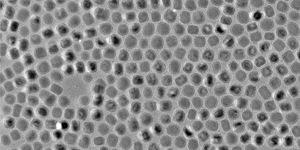Are Girls With Autism Being Overlooked?
The staggering numbers of autism cases are no surprise to most, but what some might not realize is how those numbers breakdown when gender is considered. There are several different studies that show the ratio of boys to girls in cases of autism. Hans Asperger, for whom an autism spectrum disorder is named, originally thought that no girls could possibly have it. He later revised his thinking when more evidence was available. A study from 1993 in Sweden showed that for every one girl diagnosed, there were four boys. In the UK, male adults receiving services outnumber females by 3:1 and male children in schools receiving services outnumber females by 5:1. Why this is happening is less clear however.

The first answer could be gender bias in the research studies. The specific characteristics for diagnosing autism were developed as a result of research studies that were conducted mostly with boys. While more recent studies are including more girls, it becomes a problem to find girls with an autism diagnosis for those studies, because there are less girls diagnosed. And round and round it goes. When parents have a concern about the development of their girls, the first health professional consulted is usually the family physician or pediatrician. Many of these doctors are not experts on autism and still operate under the dated assumptions that autism is uncommon in girls.
If it’s not bias, perhaps then it’s related to when and how cases of autism are diagnosed. In a 2015 study from the Interactive Autism Network, an online research community that facilitates ongoing research into autism spectrum disorders, an analysis of data showed that girls are routinely diagnosed later than boys. Since an early diagnosis and appropriate early intervention therapy is crucial for anyone on the autism spectrum, a late diagnosis puts girls at risk of losing out. If girls are not identified at a young age, many of the benefits of early intervention are lost. This is time and a development that cannot be regained.
It’s also about how autism looks in boys versus girls. Numerous studies show that girls on the spectrum present differently than boys. Many girls with autism do not exhibit disruptive behavior, they may not be as fixated on very narrow interests as are many boys and fewer girls with autism have an accompanying intellectual disability. While a boy who is seen by a health professional will receive a diagnosis as a result of these characteristics, since they often don’t appear in girls that actually do have autism, the diagnosis is not considered. In a 2014 study by psychologist Thomas Frazier of the Cleveland Clinic, girls who were diagnosed with autism tended to have more severe symptoms. In some cases, for a girl to get a diagnosis of autism there had to be glaring factors, which are not the norm for girls, so it’s easy to see how girls are getting missed when screening for autism.
Finally, recent research by the National Autism Society in the UK has tried to shine a light on the problem of gender considerations in autism diagnoses. The video below talks more about their findings and the efforts underway to combat the problem of underdiagnosis in girls.
Sources: Scientific American, BBC, National Autism Society, Interactive Autism Network, Autism Parenting Magazine








